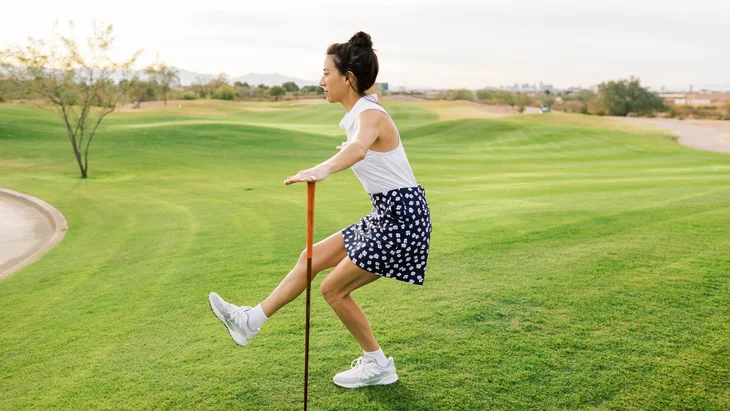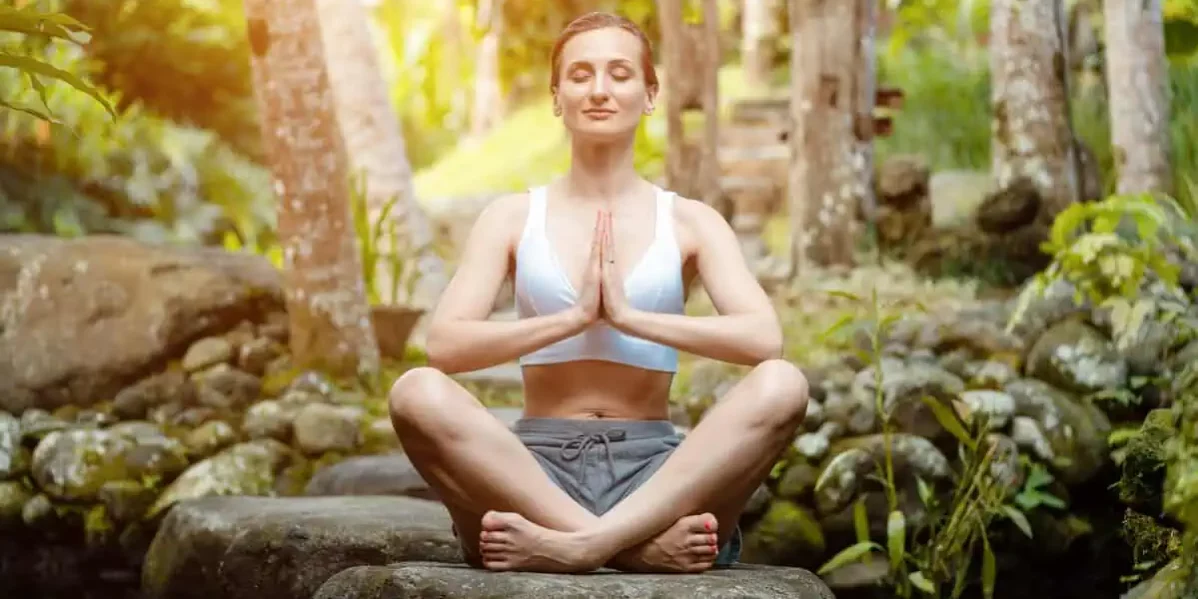Yoga For Golfers: 7 Yoga Poses Every Golfer Should Practice
Effective swing execution by Yoga For Golfers depends on a broad range of motion. Yoga stretches and lengthens muscles, therefore increasing flexibility and enabling a more fluid and forceful swing.
As a golfer, you are aware that postgame discomfort is not unusual. Although golf can improve your mental and physical condition, if you neglect a consistent stretching program, the repeated actions done during the game can strain and tax your body. That is where yoga saves the day.
Typical Problem Areas Golfers Face That Yoga Corrects

As a golfer, your lower back, shoulders, and knees are three parts of your body most likely causing pain. This is usually the result of your repeated swinging the club, standing for hours on end, and slumped over posture while you grab the ball. Many golfers also spend a good lot of time seated, which reduces flexibility and causes back trouble. Yoga For Golfers, yoga is fantastic since it addresses and helps to offset these areas of difficulty.
Back Problems: Lower
Two of the main reasons of lower back discomfort are a lack of core and hip strength as well as hip and spine mobility. You should concentrate on poses that target your balance, core strength, posture, hip strength, and general mobility to help and prevent lower back discomfort.
Shoulders
When swinging your golf club, you are deliberately working your shoulders, which can cause general shoulder discomfort or, in severe situations, a rotator cuff injury. You want to make sure you have appropriate posture to assist ease some discomfort or possibly stop the onslaught of it to start with. You should also make sure you perform poses and exercises meant to increase the mobility and strengthen your shoulders.
Knee:
Like your lower back, knee pain can sometimes result from limited mobility and strength in your hips, ankles, and core. Poses that target your balance, core strength, hip strength, ankle strength, and mobility will be especially important. If you're not stretching following exercise or golfing, knees might potentially become injured more readily.
Every one of the positions shown here is ideal for working on problem areas and increasing mobility and strength required to enhance your golf swing.
Getting Better as a Golfer Using Yoga
One activity that calls for a lot of participants is golf. Not only should you be strong all around, but exceptional outcomes depend on a reasonable degree of mobility, balance, and mental stamina. Regular yoga practice helps you to develop in every one of these aspects of your weekly exercise program. As much of a cerebral game as a physical one golf is. You must be able to be present, have a calm attitude, concentrate and focus, have a certain degree of awareness.
Yoga For Golfers would find great benefit from yoga as a workout. It enhances your skill set in addition to helping to solve typical issues golfers have. Working through poses that increase your flexibility, mobility, balance, and core strength helps you to get your body in the best possible alignment to maximize your swing. Yoga can help enhance the cerebral side of the game since it is also a workout emphasizing breathing and attention.
Read Also: The Benefits of Twists: 3 Awesome Twisting Yoga Postures
Top 7 Yoga poses to boost your golf game
Regarding yoga for Yoga For Golfers, you should practice through these positions under consistent control over your breath. Being able to remain in control and calm yourself while in some demanding poses helps you develop awareness and focus required for teeing off.
Down Dog
Excellent for your upper torso, down dog also helps your hips, shoulders, and ankles become more flexible and mobile. Start yourself in a high plank position with your legs up and your toes tucked under your shoulders. To form your body into a pyramid, raise your hips both forward and back. From your hips through shoulders and stretched arms, keep a straight line. Firmly press down all around your hands. Drop your shoulders away from your ears. Chuck your chin to view your feet behind you.
Pose for Chair Work

With your heels around one inch apart and your big toes almost touching, stand straight up. Like you would be preparing to sit into a chair, hinge at your hips and bend your knees to lower them. Keep a straight spine while you do this. Then, while you keep your squat, extend your arms overhead with palms facing one another. Maintaining your heels down and your spine neutral, keep lowering your hips till lowest possible. Not your knees, but your hips should carry most of your weight.
Pigeon Positions
Strength is developed in the pigeon stance. Starting tabletop, have your hips stacked over your knees and your shoulders stacked over your hands. Check that your toes are not tucked in. Slide one knee towards your hand on the same side and bring that foot across your body to settle between your opposite hand and knee. Try bending your knee 90 degrees. Rotate your hip such that your inner thigh faces up, your knee points outward, and your outer thigh faces down. As you stretch your back foot as far back as you can, release your hips toward the floor. Rest your hands in front of your bowed leg; if necessary, move your body weight into your hands to help square the hips forward.
Dog Bird
Often associated with golf, the bird dog posture develops strength and corrects muscular imbalances in your spine, core, hips, and shoulders. First, start atop your yoga mat from a table top posture. Stacked over your knees, have your hips over your hands and your shoulders. Your neck and spine should be still. Just gently work your core muscles. Then you want to extend one arm forward and the opposing leg straight back without moving the rest of your body. From your fingertips back to your heel, you should be making a straight line.
Backward Twist
As part of your cool-down, the reclined twist position is excellent. It's also a terrific position for releasing lower-back tension and expanding the lumbar spine. Lie on your back, knees exactly above your hips. Keeping them stacked, lower your legs to one side. Keep your shoulders down to the ground while you work. One hand is on your stacked knees; the other arm is stretched out from your side. To deepen the stretch in your back and maintain your spine neutral, draw in your chest. To keep your posture, inhale. Let out a breath to intensify the twist.
Read Also: What is the relationship between mindfulness and meditation?
Tower
Bridge pose corrects muscular imbalances in your hips, core, and spine as well as promotes your flexibility and mobility in your hips. Lay on your back with arms at your side. With knees bent and heels directly in front of your hips, plant your feet hip width apart. Press your feet into the floor then raise your hips as high as you can. Reaching the chin away from the chest, lift your chest towards it.
Triple Pose

Stand with your feet somewhat wider than shoulder width apart. Your front foot should face the top of the mat while your back toes gently turn in. Keeping a straight line through your core, reach down and stretch one arm toward the inner of your front foot. Keeping a small bend to your front knee, Your back leg should remain locked out under strong quads. Holding your palm outward, extend your other arm upward. Try to create a straight vertical line between hand to hand. Pressing the top of your head in the same direction as your front foot, inhale. Press your front hip into your back hip, then deepen the hip stretch and open your torso farther into the twist when you exhale.
FAQs
Will yoga help my golf?
One of the easiest approaches to boost golf performance and restore, enhance, and preserve ideal functional movement patterns is golf conditioning yoga.
Which style of yoga is best?
Ashtanga approaches yoga with a continuous flow of movement, so it is the most dynamic and energetic style of yoga. Top athletes who want a more rigorous exercise find this type of yoga—sometimes known as vinyasa or power yoga—to be great. Ashtanga generates heat in the body to drive toxins out






